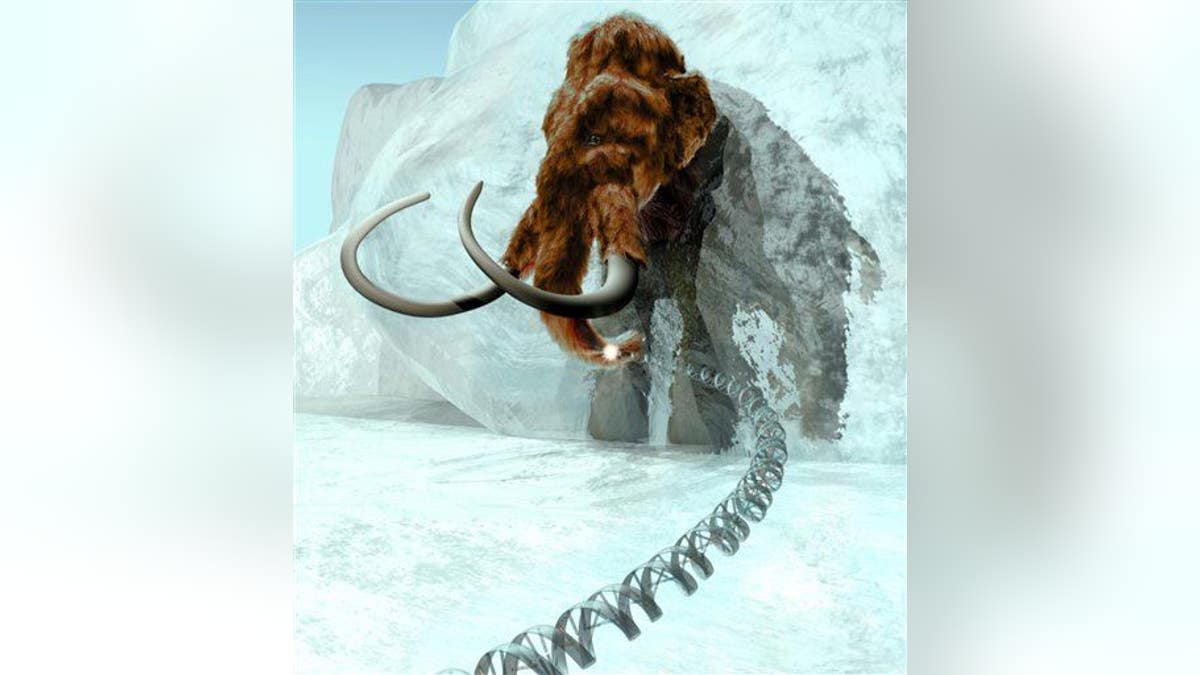Woolly mammoth cells brought back to life in shocking scientific achievement
Cells from a woolly mammoth that died 28,000 years ago have begun to show 'signs of biological [activity]' after they were implanted in mouse cells.
Cells from a woolly mammoth that died 28,000 years ago have begun to show "signs of biological [activity]" after they were implanted in mouse cells. However, researchers caution that it's unlikely the extinct creatures will walk the Earth again anytime soon.
The research, published in Scientific Reports, details how a well-preserved woolly mammoth, found in 2011 in the Siberian permafrost, has begun to show some activity.
"This suggests that, despite the years that have passed, cell activity can still happen and parts of it can be recreated," Kei Miyamoto, a member of the team that conducted the work, said in an interview with AFP.
SCIENTISTS WANT TO CLONE THIS EXTINCT, FROZEN PREHISTORIC HORSE
"Until now many studies have focused on analyzing fossil DNA and not whether they still function," Miyamoto added.
The study's abstract reveals "[i]n the reconstructed oocytes, the mammoth nuclei showed the spindle assembly, histone incorporation and partial nuclear formation; however, the full activation of nuclei for cleavage was not confirmed."
However, there were varying levels of DNA damage done, which the researchers said "were comparable to those of frozen-thawed mouse sperm and were reduced in some reconstructed oocytes."
While some evidence of biological processes were seen, the damage the elements had on the cells are not enough for bringing the mammoth back to life, eschewing any kind of "Jurassic Park-style resurrection" that many have hoped for, Miyamoto said.

This undated handout shows a computer-generated Image of a woolly mammoth emerging from ice block. (AP Photo/Mammoth Genome Project, Steven W. Marcus)
"We have also learned that damage to cells was very profound. We are yet to see even cell divisions. I have to say we are very far from recreating a mammoth."
Woolly mammoths went extinct more than 4,000 years ago, with some scientists believing they died off from the changing climate and human hunters.
CAN THE LONG-EXTINCT WOOLLY MAMMOTH BE CLONED?
Despite Miyamoto's comments, some researchers are attempting to bring the mammoth back with the use of gene editing, including the controversial CRISPR gene editing tool.
George Church, a Harvard and MIT geneticist and co-founder of CRISPR is the head of the Harvard Woolly Mammoth Revival team, a project that is in attempting to introduce mammoth genes into the Asian elephant for conservation purposes.
"The elephants that lived in the past — and elephants possibly in the future — knocked down trees and allowed the cold air to hit the ground and keep the cold in the winter, and they helped the grass grow and reflect the sunlight in the summer," Church told Live Science in May 2018. "Those two [factors] combined could result in a huge cooling of the soil and a rich ecosystem."
Mammoth finds around the globe
Mammoth remains have been found all over the globe in recent months. In June, a mysterious mammoth bone was found on a beach in Loch Ryan in southwest Scotland.
In August, a frozen woolly mammoth was found in Siberia, with researchers theorizing that it may be a new type of species, because of its small stature. It has been dubbed a "Golden mammoth" and could be as much as 50,000 years old.
In September, a mammoth kill site was found in Austria, where Stone Age people slaughtered mammoths.
CLICK HERE TO GET THE FOX NEWS APP
Fox News' James Rogers contributed to this report.









































